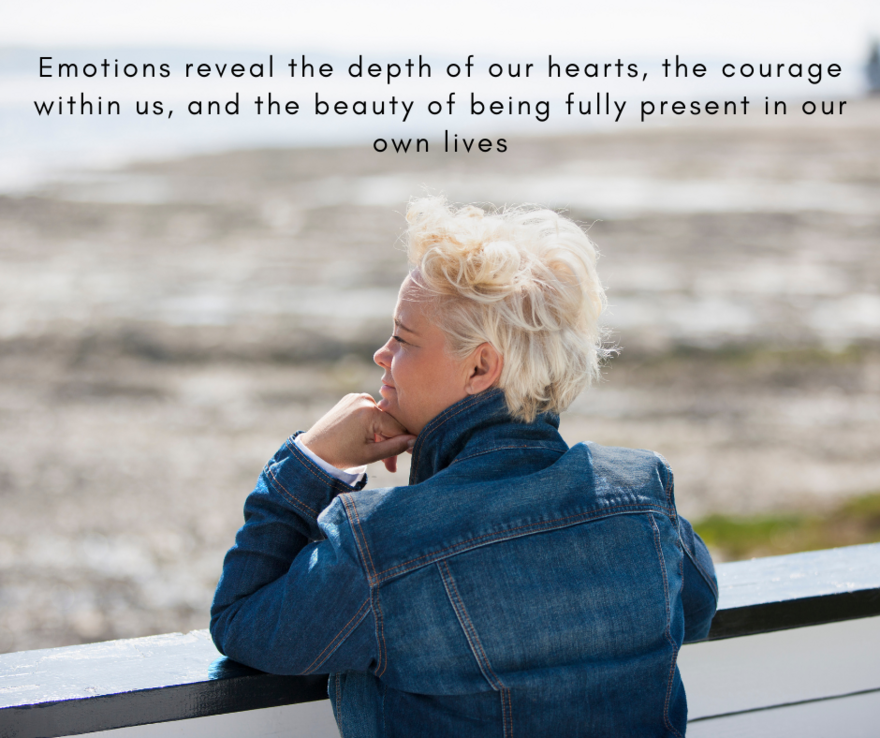
There are moments when emotions hit us so fast that our first instinct is to turn away—to distract ourselves, stay busy, or numb the ache with something external. But what if, instead of resisting, we leaned in? It may feel uncomfortable at first, but allowing ourselves to feel—really feel—can be one of the most powerful things we do for our emotional well-being.
The Science Behind Emotional Avoidance and Acceptance
Our brains are wired to protect us from pain, and that includes emotional pain. When we experience something distressing, the amygdala—the part of our brain that processes fear—lights up, signaling us to avoid whatever is causing discomfort (LeDoux, 2000). This response is helpful in true danger, but when it comes to emotions, avoidance can actually make things worse. Suppressing emotions doesn’t make them go away; instead, they build up beneath the surface, increasing stress and making us feel even more overwhelmed (Campbell-Sills et al., 2006).
Research shows that when we name our emotions—simply saying "I feel sad" or "I feel anxious"—it helps regulate our brain’s response. Studies using fMRI scans found that labeling emotions reduces activity in the amygdala, making difficult feelings feel more manageable (Lieberman et al., 2007). In other words, acknowledging what we feel actually calms our nervous system.
Why Emotions Coexist: The Neuroscience of Mixed Feelings
We often think of emotions as either good or bad, but life isn’t that simple. We can feel joy and sadness at the same time, just as we can feel gratitude in the midst of grief. These emotions don’t cancel each other out—they coexist, shaping our experiences in ways we may not fully understand in the moment.
Psychologists call this "emotional complexity," and research suggests that people who can hold mixed emotions tend to be more resilient and adaptable (Larsen et al., 2001). Instead of feeling like we have to choose between being happy or sad, we can make space for both and recognize that our emotional landscape is rich and layered.
The Power of Emotional Presence and Self-Compassion
When we stop fighting our emotions, we discover something surprising: they don’t have to control us. Instead of feeling consumed by sadness or anxiety, we can learn to observe these feelings with curiosity and self-compassion.
Dr. Kristin Neff’s research on self-compassion shows that when we treat ourselves with kindness—like we would a close friend—we experience lower levels of stress and greater emotional well-being (Neff, 2003). This means instead of judging ourselves for feeling a certain way, we can practice saying, "It’s okay to feel this. I’m human."
How to Stay Present with Your Emotions
Being with our emotions doesn’t mean getting stuck in them. Here are a few ways to stay present while allowing feelings to move through you:
-
Name What You’re Feeling – Saying "I feel overwhelmed" can help lower emotional intensity and bring clarity (Lieberman et al., 2007).
-
Practice Self-Compassion – Speak to yourself the way you would to a friend going through the same thing (Neff, 2003).
-
Breathe Through It – Deep breathing and mindfulness help regulate the nervous system, making emotions feel less overwhelming (Kabat-Zinn, 1990).
-
Connect with Others – Sharing your emotions with a trusted friend or support group can provide comfort and validation.
Walking Forward with Openness and Courage
We don’t have to fear our emotions, and we don’t have to face them alone. Healing isn’t about pushing emotions away—it’s about learning to be present with them, to listen to what they’re telling us, and to move forward with self-compassion.
Every time we choose to acknowledge our emotions instead of running from them, we build resilience. We strengthen our ability to stay present, honor our experiences, and walk forward with courage. Our emotions, even the difficult ones, are not something to fear—they are a part of what makes us beautifully human.
References
Campbell-Sills, L., Barlow, D. H., Brown, T. A., & Hofmann, S. G. (2006). Acceptability and suppression of negative emotion in anxiety and mood disorders. Behavior Research and Therapy, 44(9), 1203-1210.
Kabat-Zinn, J. (1990). Full Catastrophe Living: Using the Wisdom of Your Body and Mind to Face Stress, Pain, and Illness.
Larsen, J. T., McGraw, A. P., Mellers, B. A., & Cacioppo, J. T. (2001). The agony of victory and the thrill of defeat: Mixed emotional reactions to disappointing wins and relieving losses. Psychological Science, 12(4), 325-330.
LeDoux, J. E. (2000). Emotion circuits in the brain. Annual Review of Neuroscience, 23(1), 155-184.
Lieberman, M. D., Eisenberger, N. I., Crockett, M. J., Tom, S. M., Pfeifer, J. H., & Way, B. M. (2007). Putting feelings into words: Affect labeling disrupts amygdala activity in response to affective stimuli. Psychological Science, 18(5), 421-428.
Neff, K. D. (2003). The development and validation of a scale to measure self-compassion. Self and Identity, 2(3), 223-250.

Comments